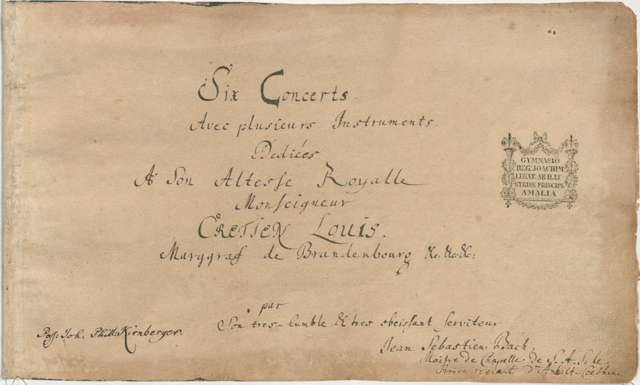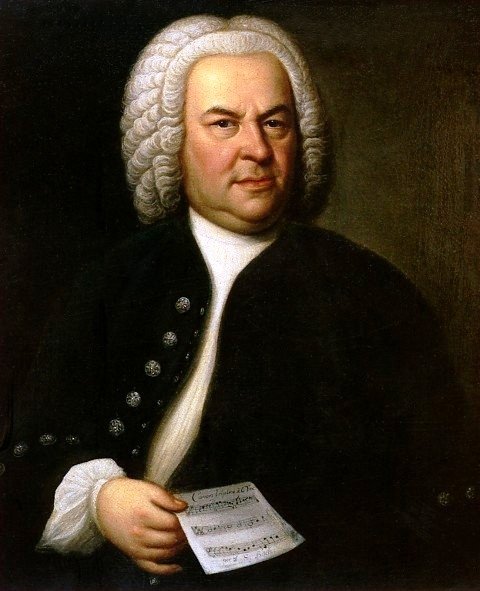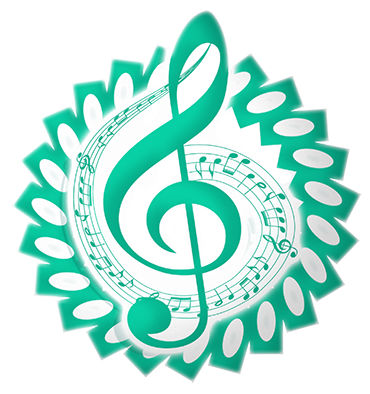Discovering The Six Brandenburg Concerti by J.S. Bach

The six Brandenburg Concerti by Johann Sebastian Bach (1685-1750) are one of the most important collections of masterworks by one of the most recognised composers of the Baroque (or even the entire history of Western Art Music) period. Due to the wide variety of required solo instruments (of which, some don't exist any more in a modern symphonic orchestra), it is often a huge financial and organisational undertaking for even a period instrument orchestra to consider performing all the concerti in a single concert programme.
A couple of years ago, I was lucky enough to be on tour with an orchestra that was able to schedule a series of concerts with the entire set of concerti and it was an incredible experience to be able to play the complete set in one sitting (with an interval of course!). Who knows when that will happen for me again?
Johann Sebastian Bach

For most lovers of Classical Music, JS Bach needs little introduction, in that he was perhaps the central pillar of the German High Baroque, which led further to the complete evolution of the German Historical Music tradition which formed the basis for pretty much most of the musical tradition that we have today. Okay, that might be a touch on the hyperbolic side of things, but it is no understatement that his contributions to the development of music in the Baroque era (which moulded the music that arrived later) were so important that for most music historians, his death marks the end of the Baroque era (c.1600-1750) and the beginning of a new era.
JS Bach was a German (although, technically Germany didn't exist at the time) composer and musician who was born into an existing large family of musicians, being born as the last child of a musical family in Eisenach. He was employed as a church and court musician in a variety of cities, most notably in Weimar and then from 1723 until the end of his life as the kantor at the highly prestigious Thomaskirche in Leipzig.
During his life, he was a prolific composer of cantatas and other religious works, including epic works such as the B minor Mass and the Matthew and John Passions. Given that he needed to compose a new cantata for every Sunday service (following the theme of the sermon) and every feast day, it is no surprise that he is thought to have composed over 300 cantatas (of which roughly 200 survive through to this day). In addition to these sacred cantatas, he is known to have composed about 50 more cantatas on secular topics, including one memorably famous cantata that was devoted to the topic of Coffee, which was a newly discovered and imported fashion at the time!
As a complement to these vocal and choral works, he had an equally large and important contribution to the field of instrumental music, with works such as the "The Well Tempered Klavier", the "Sonatas and Partitas for Solo Violin", several orchestral suites and various instrumental concerti being some of the better known highlights.

Brief overview of the concerti

The Six Brandenburg concerti were a sort of "job application" for JS Bach to the court of Christian Ludwig (the Margrave of Brandenburg). As a sign of how important Bach considered the pieces, he wrote the music out in his own hand, rather than entrusting the transcription work to a copyist, as was the tradition at the time.
The dedication to the Margave from Bach (translated from French) is as follows:
As I had the good fortune a few years ago to be heard by Your Royal Highness, at Your Highness's commands, and as I noticed then that Your Highness took some pleasure in the little talents which Heaven has given me for Music, and as in taking Leave of Your Royal Highness, Your Highness deigned to honour me with the command to send Your Highness some pieces of my Composition: I have in accordance with Your Highness's most gracious orders taken the liberty of rendering my most humble duty to Your Royal Highness with the present Concertos, which I have adapted to several instruments; begging Your Highness most humbly not to judge their imperfection with the rigor of that discriminating and sensitive taste, which everyone knows Him to have for musical works, but rather to take into benign Consideration the profound respect and the most humble obedience which I thus attempt to show Him.
The Concerti follow an older style of Concerto Grossi composition. The Concertino (soloists) were a smaller group within the larger tutti group (Ripieno) who would play various interludes within the larger orchestral structure. This is in stark contrast to later forms of the Concerto, which pitted a single soloist contrasted by a larger orchestra.
These Concerti are also unusual in their combinations of solo instruments, with many unusual instruments making appearances as soloists, and also with various settings of the soloist groups being incredibly exotic for the time (and since!).
All of them, without exception are a joyous celebration of music as it was known at the time. Which makes sense, if you are writing a job application to a Margrave, you want to make it upbeat!

Brandenburg Concerto #1 (BWV 1046)
The first concerto is set for two corni da caccia (natural horns), three oboes, bassoon, violino piccolo, two violins, viola, cello, basso continuo. It is the largest instrumentation of the set, and features the horns, oboes and the Violino Piccolo in the solo roles.
I had written before about the Piccolo Violin, as it is an instrument that fell out of favour with the development of the violin family away from the earlier consort style of instrumentation.
This concerto is a huge opening to the set of concerti, and is quite an exhausting play for the wind soloists! It is really an expression of joy to hear this, with the horns having unusually prominent parts throughout the concerto, in stark contrast to their normally humble uses as a practical outdoor instrument.

Brandenburg Concerto #2 (BWV 1047)
The second Brandenburg Concerto is scored for: Clarino (Natural Trumpet), recorder, oboe and violin as the solo group and the ripieno consists of 2 violins, viola and continuo.
This concerto and the last movement in particular is considered THE most difficult piece in a baroque trumpeter's repertoire. The high tessitura (pitch) and the fast moving notes being close together in the harmonic series makes this a real test of the player's skill and stamina. Most modern players use valved trumpets, which makes this a complete breeze (comparitvely) to play. However, in Bach's time, this was all done with a vavleless trumpet, which meant that the trumpeter had to do all the switching of different resonant modes (to get the different notes) only with his mouth and air speeds! It is hard to convey with words exactly how fiendishly difficult this is (and to stay in tune and in time and everything else musical!).
Another interesting thing about the instrumentation is the pairing of two "soft" indoor instruments (the recorder and violin) with two "loud" outdoor instruments (the clarino and oboe).
The piece itself is of a much grander character than the first concerto, with the trumpet lending a more noble sound to the ensemble than the hunting horns of the first!

Brandenburg Concerto #3 (BWV 1048)
The third Brandenburg concerto is the most beloved of the set for all string players. Featuring no real soloists, it is set for 3 violins, 3 violas, 3 celli and continuo.
There is not so much to write, except that the symmetry of the group leads to many interesting matches of 3, either similar instruments or completely different instruments. Both the first and last movement are just joyous throwing of theme from group to group, with the last being one of my favourite pieces of all time!
The second movement is usually a completely improvised movement from the harpsichordist or the lead violin, and it will be completely different from group to group (and ideally, from performance to performance!).

Brandenburg Concerto #4 (BWV 1049)
The fourth Brandenburg concerto features 2 recorders and a violin as the solo group. It is a piece that appears quite often on stage, as it is one of the few pieces where a recorder can take centre stage. In both outside movements, the violinist is the real star though (absolutely no bias!), with passagework that is absolutely fireworks and champagne!
I love telling the recorders that in the third movement, there is a spot where they sound like toy trains! Usually I find that the best time to point this out is right before the concert...

Brandenburg Concerto #5 (BWV 1050)
This brings us to the favourite concerto of all the harpsichordists. The fifth Brandenburg features a solo violin, traverso (flute) and harpsichord. However, it is clear that this is a giant celebration of the harpsichord, with a huge solo passage in the middle of the first movement! However, it does have one of the most beautiful slow movements in the second movement with heartbreaking dialogue between the violin and traverso.
One point of interest is that the ripieno consists of only a single violin part instead of the more usual two violin parts of the previous four concerti.

Brandenburg Concerto #6 (BWV 1051)
As a violist as well as a violinist, this last Brandenburg concerto is the absolute jewel in the crown of the Brandenburg set. Featuring a completely left field combination of 2 solo violas and cello, with a ripieno of 2 viola d'gambas and continuo, it is a tenor and bass heaven. No squeaky treble sounds here at all!
This allows for a sound world that is completely unlike anything else in the concerto set. Normally the bastard child of the orchestra, the violas shine here without the need to smash through the wall of violin sound.
The first movement and last movements are playful romps, with the two solo instruments chasing each other's tails round and round at speed. The middle movement, is just the single most beautiful lament between a pair of the most neglected instruments in the Baroque music world.
Hearing the last movement never fails to bring a smile of joy to my eyes and heart, it really turns me to a child again!

Wrapping Up
Many people consider these Brandenburg concerti to be absolute peak of Baroque instrumental writing. I would have to agree, the stunning choices of instrumentation and the distances that Bach pushes the instruments to their limits was just unheard of at the time.
If I had to list my favourites, it would be in the order: Six, Three, Four, One, Two and then Five. Sorry harpsichordists!
... and in case anyone was wondering... Bach did NOT get the job!
Upgoats by ryivhnn
Account banner by jimramones
The classical music community at #classical-music and Discord. Follow our community accounts @classical-music and @classical-radio. Community Logo by ivan.atman

Join us @steemitbloggers
Animation By @zord189

Posted from my blog with SteemPress : http://www.gamerjokerbreadder.com/2018/08/25/discovering-the-six-brandenburg-concerti-by-j-s-bach/




I have to be honest I have never been a folower of classical music, but this was such an informative post I learnt i lot so thanks for sharing, now will listen to the first piece as I read other posts
cheers
Glad you enjoyed reading! Hope the listening is also enjoyable!
@bengy I actually surprised myself and enjoyed them
Ha ha, glad you enjoyed them! I took good care in finding good performances!
I've never thought of the Brandenburg Concertos as a job application! I think the second one will always be my favourite, as it was my first introduction to this work, back in the late 1980s. I had fallen asleep with the radio on, and a classical music programme came on at about 2am. I was half awake and half in a dream where I was watching the various musical instruments having an animated conversation with each other. Even though I wasn't sure exactly which instruments were playing, I could almost see it in my mind as they all had such different and distinct "voices". I think the next day I went out and bought a copy, and I've always loved that piece ever since. It's so joyful.
The last movement of Concerto No.3 is also one of my favourite pieces of all time. I never tire of this music. Thanks for telling us more about it, and from a musician's point of view.
What a great way to wake up and a great way to be introduced to these concerti! 2 and 3 are pretty great ones, but I still love the 6th one the best!
Your post has been supported and upvoted from the Classical Music community on Steemit as it appears to be of interest to our community.
If you enjoy our support of the #classical-music community, please consider a small upvote to help grow the support account!
You can find details about us below.

The classical music community at #classical-music and Discord.
Follow our community accounts @classical-music and @classical-radio.
Follow our curation trail (classical-radio) at SteemAuto or help us out with a delegation!
Great post, I knew about the name but not near this much. I will be back to listen
This are amazing pieces, hope you find time to listen!
Another great post @bengy! I had no idea that Bach composed so many cantatas! And recorders??!! Who knew?! In Canada, all elementary students learn the recorder ... but I never knew it could sound like this! My ears used to bleed when my kids were home practicing haha
and Bach didn't get the job lol That's awesome :)
Submitting to c-squared buddy! Nice job:)
Thanks for submitting it!
Yes, recorders are handed out left right and centre like unrestricted weapons to little children, so it is hard to imagine it as a proper musical instrument! Of course, it did fall out of favour since the Baroque times!
I couldn't help but think of the total amount of lung volume required to accomplish these pieces! Then my mind side-barred to the wild, Jekyll-Hyde readings that would appear on pulmonary spirometer tests.
(Yeah. I know. I got'ta get out more often...)
Namaste, my friend.
JaiChai
Lol, I literally have no idea what you are saying! Got enough sleep last night?
Lol! I was just imagining how much human hot air was needed for all those instruments.
Namaste, JaiChai
Ha ha, now that makes more sense!
Wow, I think anyone who complains about having to write a details resume should read this! And after all that, he still didn't get the job...? 😮
All in all, this was a fascinating post! I'd forgotten that some of the instruments used in Bach's compositions no longer existed, and had no idea the Brandenburg Concerto was such a big deal to put together all at once.
If I were still homeschooling (our baby turned 18 in the spring), I'd definitely use your posts as part of a music appreciation curriculum - they are informative as well as entertaining. Nicely done, and thanks for putting this together!
Ha ha, no longer a baby!
Thanks for the kind words about my posts on music! It is unbelievable that he didn't get the job, but on the other hand who knows what he might not have written if he didn't end up going to Leipzig!
All three (23, 21, and 18) are definitely not babies, but they're always going to be my babies (and yes, I still say things like, "Hey baby" to them...LOL!). And that's an excellent point - things might've been much different if his resume had been accepted. 😜
I assume these recordings are of performances at A440? Do you happen to know what pitch Bach composed in?
No, most of them should be at 415 as the modern baroque normal. Also in various temperaments.
Bach used a variety of A, to deal with the inconsistency of pitch across different cities. Depending on the location, the A would have been 415, 440 or 466 with sometimes the wind, choir and strings playing different pitches, with the pieces being written in different keys to make it work. Koortoon and Kamertoon if you are interested. Also it is suspected that he would have used a variant of Werckmeister for temperament.
no doubt those characters made a great contribution to the musical history of the world
Definitely, these were a huge contribution to music!
WOW! This was a lot of fun reading & listening to! Thanks for sharing. :D 🎶🎶🎶
No Problem! Hope you enjoyed the music!